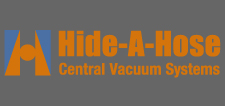 |
 |
 |
 |
 |
 |
|
Central vacuum systems are becoming a popular weapon in the fight against indoor air pollution Monroe, Wash. - As winter approaches, the weather outside is getting more frightful, yet the conditions inside can be alarming as well. Health risks from polluted indoor air are a year-round concern and can be greater during colder months, health and environmental officials believe. According to the U.S. Environmental Protection Agency, the buildup of dust, mold spores, tobacco smoke, radon, carbon monoxide and volatile organic compounds can make the air quality inside a home five to 100 times worse than the air outdoors. Increased efforts over the last three decades to make houses more energy efficient have only exacerbated the problem. By sealing up homes from outside air, toxins are kept inside, where adults and children spend more time during the frigid winter months. Homeowners, builders and remodelers are taking steps to combat indoor air pollution as the term "green building" becomes more familiar in the United States. One tool that improves indoor air quality is a central vacuum system. "You can spend a lot of money on a portable vacuum system, but even with filters they re-circulate dust, allergens and other unwanted elements into your air," said Rod Drivstuen, co-founder and president of Hide A Hose Inc. ( HYPERLINK "http://www.hideahose.biz" www.hideahose.biz), a Monroe, Wash.-based company that manufactures a retractable hose system for central vacuum units. "Central vacuum systems are not only convenient and more powerful, but they also remove dust and allergens and improve the air quality inside your home." Boasting up to five times the suction and power of uprights, central vacuums capture 100 percent of all vacuumed dirt, dust, odors and allergens. Inlet valves are strategically placed throughout the home, allowing users to cover the entire house. With an array of accessories, central vacuums also clean all carpet types and hard surface flooring along with upholstery and drapery. The systems are so quiet that they can be used without awaking a sleeping child. Even with those perks, many people who have central vacuum systems in their homes don't like the necessity of lugging a long bulky hose from inlet to inlet, and finding a place to store the hose when they are finished. The Retractable Hose System from Hide A Hose solves this problem. Consumers pull out the length of hose they need to vacuum the room, and begin vacuuming. When they are finished, the suction from the Central Vacuum Power Unit automatically retracts the hose back into the wall. Since the hose remains completely concealed in the wall, there is no need to lug the hose from room to room or find a place for storage. All you do is carry your tools to the next inlet and start the process again. "Simply put, our system solves the problem of what to do with the hose when you are finished vacuuming; we make vacuuming easier," said Rod Drivstuen, who is president of Hide-A-Hose. Gary Phillips, owner and president of Gary's Vacuflo, is one of the largest dealers of central vacuum systems in the United States. He believes that more consumers will have central vacuums installed in their homes when they learn about the convenience that Hide A Hose provides. "A portable vacuum cleaner is the most frequently replaced appliance in the home," Phillips explained. "Once people become educated about the virtues of central vacuums, in many cases they are interested in having one installed. An item like Hide A Hose makes using a central vacuum easier, which encourages more people to add the system to their home." There are public misconceptions about central vacuum systems that cause some people to refrain from trying them, says Amy Wesely, who is marketing manager of Ohio-based H-P Products, which manufactures the Vacuflo central vacuum system. "There are homeowners who think that having a central vacuum system installed is a difficult process, especially in an existing house," she said. "However, as long as the installers have access from attic or basement or crawl space, they can easily get tubing between the walls, and the project can be finished in eight hours." The perceived cost is another deterrent. "In a 2,500-square-foot home with standard valves, the cost is $1,500-1,700 for installation and parts," Wesely said. "Hide A Hose reduces the number of valves that are required, and the overall cost of a Vacuflo system with Hide A Hose is $1,800-$2200 for a 2,500-square-foot home. There are several portable vacuums that are more expensive, yet they don't provide as much convenience and power, nor do they improve a home's indoor air quality." Homes equipped with central vacuum systems are more common in Canada, where the green building movement has been more expediently embraced than in the United States. Sooner than later, the systems will become standard features in American homes, Phillips believes. "There was a time when a microwave and a dishwasher were considered amenities and were not not commonplace in a home," Phillips said. "There will be a time when central vacuum systems are staples of most homes in the United States, too." ### Media Contact:
|
|
